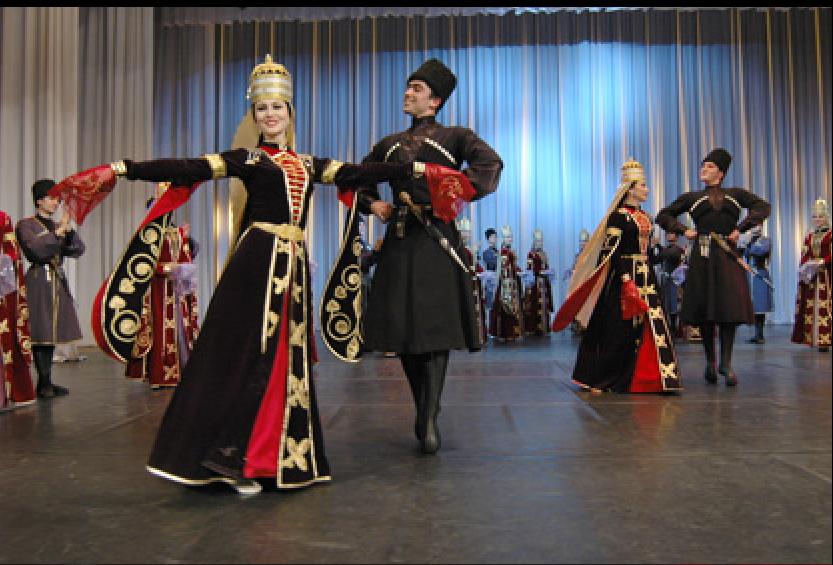Circassian Dance
АДЫГЭ КЪАФЭ
Amjad Jaimoukha
Dancing has always had a special place in the life of the Circassians. In mythical times, the Narts held annual festivals and tournaments in which dances were held. No public or family festivity was complete without a round or more of dancing. It also kept the male dancers in tip-top shape thanks to the energetic tunes. It is nowadays the most popular kind of folk art.
Dance was initially a religious rite, a kind of spirited prayer. Later it turned into a form of festive celebration, keeping some of its ritual significance. It was only in recent times that dance turned into a pastime devoid of religious meaning. All dances are based on the rich material of Circassian folklore. Cossacks, Georgians and other Caucasians adopted many Circassian dance forms and some melodies.
Read more in the following Microsoft Word file:

|
Circassian Dance.pdf Size : 1239 Kb Type : pdf |

|
Circassian Dance.doc Size : 3074 Kb Type : doc |

The Adigean State Academic Folk Dance Ensemble
‘Nalmes’.
Established in 1936, ‘Nalmes’ sees itself as ‘the
collector,
guardian, and interpreter of Adigean folk music and
dancing’.
For a selection of dance tunes, visit <http://iccs.synthasite.com/circassian-dance.php>
Джэтэгъэжьхэ Iэгъурбий и гъыбзэ; Jeteghezchxe
’Eghwrbiy yi Ghibze (‘The Elegy of ’Eghwrbiy
Jeteghezch’) – Vladimir Bereghwn (Baragunov).
(Kabardian)
This
is a well-known Kabardian lament. The words of the elegy were composed by the
residents of the Kabardian village Yislhemey (currently part of

|
Jeteghezchxe 'Eghwrbiy yi Ghibze (The Elegy of 'Eghwrbiy Jeteghezch), Bereghwn Vladimir.mp3 Size : 1118 Kb Type : mp3 |